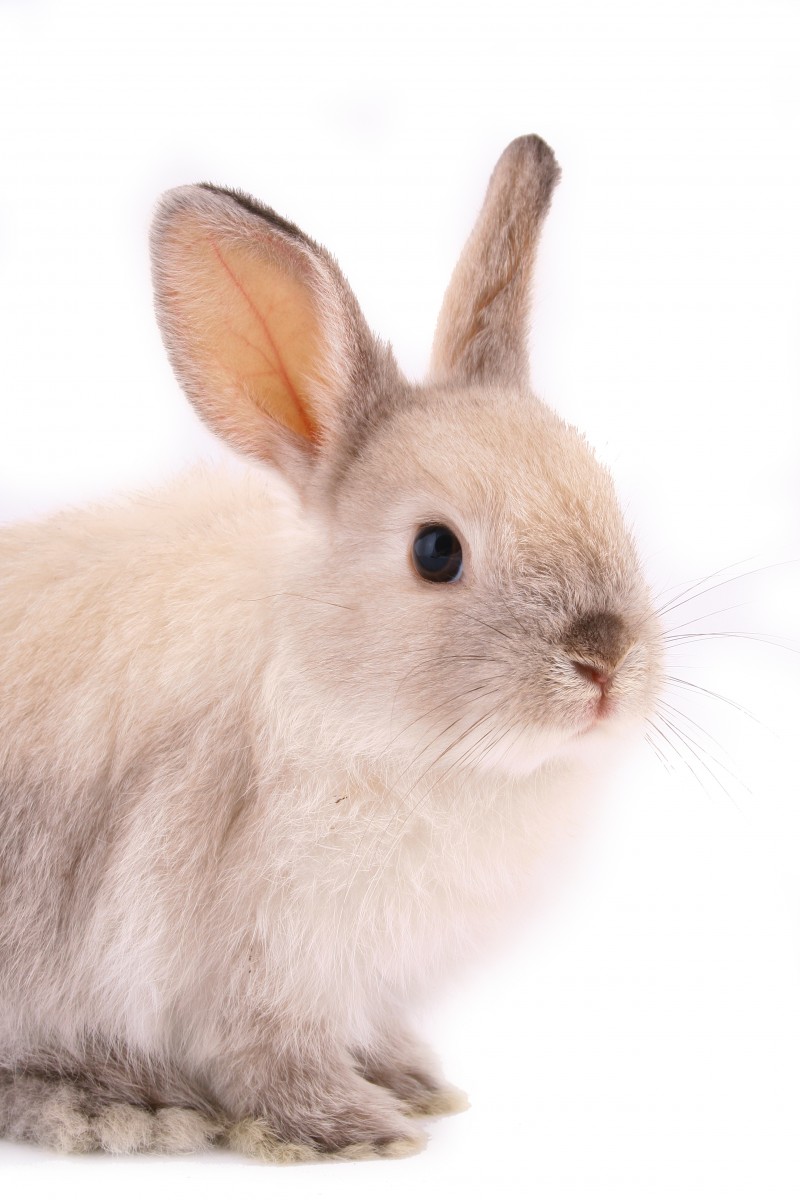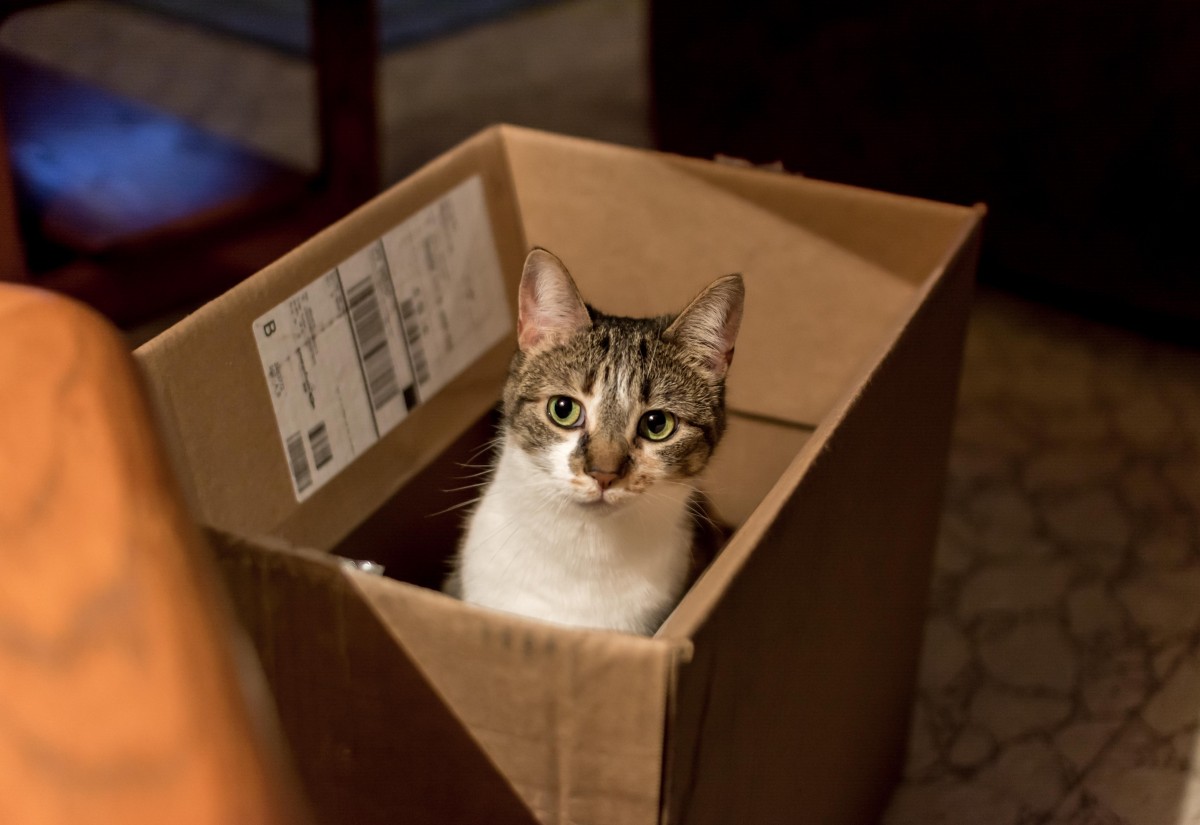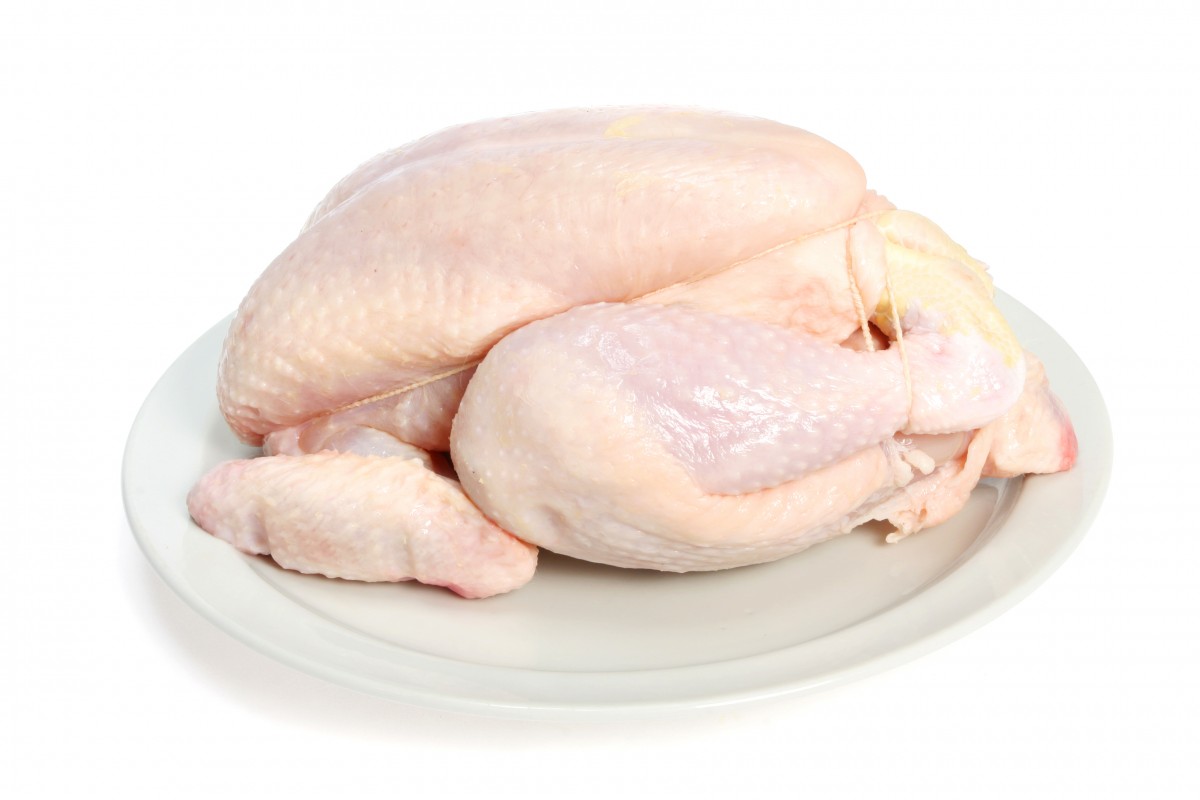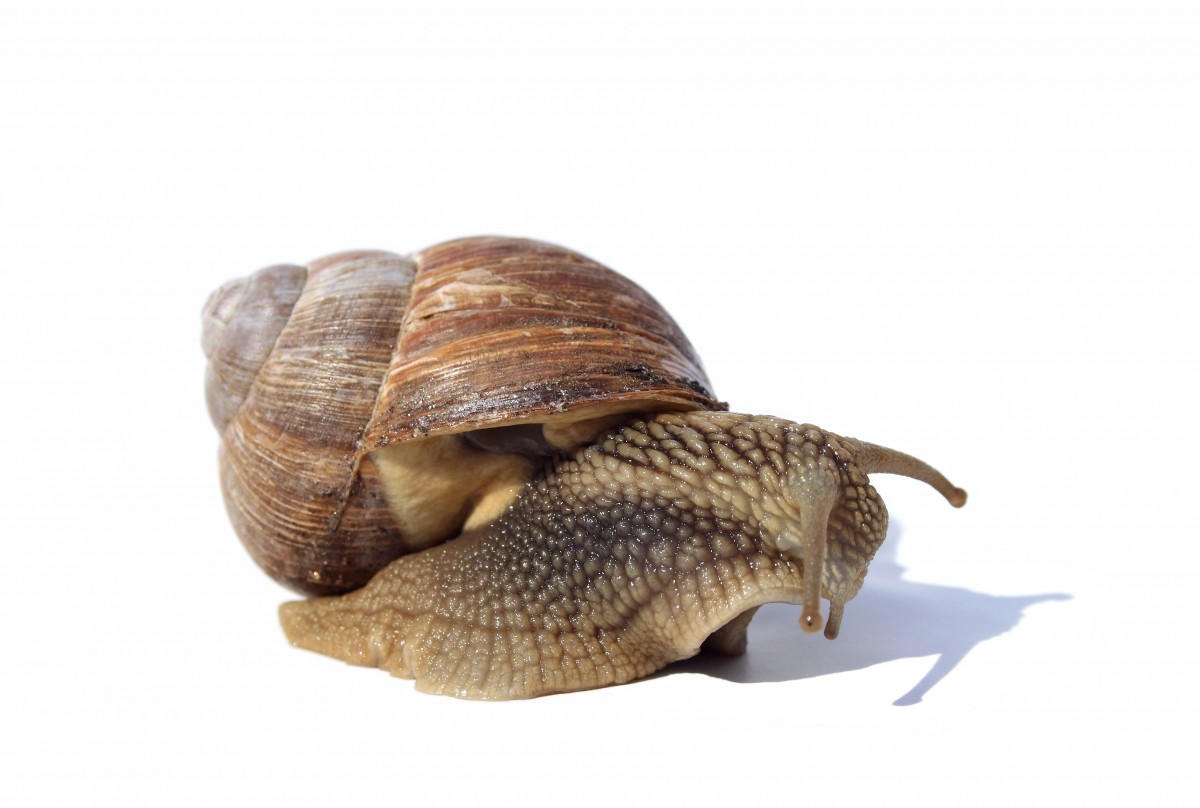
The government of New Zealand may soon deploy a futuristic tool to solve an old problem, unique to their biosphere. That problem is the invasive species — like rabbits, rats, and stoats — that have wreaked havoc on native species that have not evolved to
ideal with predation. Previous attempts to gain control of these invaders have been unwieldy (like traps), and have sometimes backfired in allowing new invasive species to gain a foothold in the country (like the above-named stoats, imported in the 1880s to deal with all the danged rabbits). But New Zealand has pledged to go “predator free” by 2050, and is considering adding to their quiver everyone’s favourite gene editing tool, CRISPR.
While very much in the experimental stages, the idea goes something like this: scientists can use CRISPR to cut out and readjust portions of a target animal’s DNA; to, for example, prevent them from having female offspring. Using a “gene drive” to push this artificial change through to successive generations means that his glitch becomes essentially inheritable, and the population of rabbits or rats or stoats naturally crashes within a few iterations.
While real world gene adjustments have been accomplished only with yeast and fruit flies, scientists are confident the technique can scale up. If applied to New Zealand’s invasive species problem, it would eliminate the need for costly trapping programs, and for poisons that could go where they shouldn’t.
An interesting hiccup involves keeping the edit going through enough generations that it manages to reach its goal. Evolution is powerful, and quick enough that it could “write” a workaround for exactly what the edited gene is prevented from doing. But:
“[R]esearchers propose a way to redesign gene drives in order to work around that immunity, hypothesizing that a more complex architecture would make it difficult for a mutation to occur in a short period of time. Instead of just including instructions for a gene drive to cut a piece of DNA in one place, their architecture it cuts in multiple places, meaning it would require multiple mutations to overwrite the drive. They also suggest targeting genes less likely to mutate in the first place, because they are essential to a species’ fitness.”
If scientists can surmount this obstacle, they could be well on their way to establishing the most minimally… um, invasive, way of dealing with invasive species that we’ve seen. I’ve always believed that we should take our impact on this planet seriously, and attempt to undo what damage we can. But, if we learn something really cool about the mechanics of genes on the way, all the better!
Since its serendipitous discovery by Alexander Fleming in 1928, penicillin has developed into one of the leading lights of the antibiotic world. But quite a few of us are allergic to it — or so we think. It appears that a startling number of folks who profess a penicillin allergy come to that conclusion without actual testing, and doctors seeing them for a pesky cough or infection often take them at their word.
However, this operating procedure is being reevaluated in the age of the superbug. With use of penicillin, a frontline treatment for infection, being dismissed out of hand for many patients, doctors turn to bigger guns; prescribing harsher drugs that are more likely to prompt resistance in what’s being treated. So, an individual’s phantom allergy to everyone’s favourite bread mold derivative could lead to us all being toast!
In a study published in the Journal of Allergy and Clinical Immunology, researchers have tested a new protocol that takes the guesswork out of penicillin allergy diagnosis:
“[Lead author, allergist, and immunologist Kimberly] Blumenthal and colleagues assessed different methods for beating back allergy myths in internal medicine inpatients at the Brigham and Women’s Hospital over a two-year period. The study was broken into three spaced-out segments. In the first, researchers collected baseline data for penicillin and related prescriptions over five months. In the second, seven-month stretch, they looked at the same data when doctors were prompted to have patients consider taking skin allergy tests before antibiotic prescriptions. And in the last seven-month segment, they looked at prescription data when doctors had a computerized, clinical guideline for making decisions about prescriptions.”
Of the 43 participants who ended up cleared to undergo skin tests, none were shown to have the penicillin allergy they thought they had. The third group, the one given just a bit more diagnostic scrutiny by doctors, had a two-fold improvement in prescriptions.
This just goes to show that one can rarely go wrong in applying a bit of science to commonly held assumptions. It not only provides clarity about individual personal health, but might help us all avoid the Great Filter of a rampant superbug. That’s a win-win!
The three R’s of Recycle, Reuse, Reduce come naturally when living in the country. Instead of watering my garden from our well I carry buckets of water from the rain barrel. I’ve learned that the ashes from the wood stove that we use to heat our house are used on the driveway as a natural ice-melter. We now take apart all of the packaging that stuff comes in and recycle the plastic and burn the paper/cardboard. By doing this we have reduced our garbage to the point that some weeks we don’t have enough to fill a bag! Junk mail is no longer an irritant – it goes into the wood stove! Same as the phone book that we received – instead of it taking space in the recycling box it is used as kindling when starting a fire. Speaking of the wood stove and fire, I discovered that burning wood is considered carbon neutral. Also we buy some fire wood and harvest our own from our property from dead fall trees or those that need thinning out. Another form of recycling is getting rid of old clothes: instead of throwing them in the garbage or a donation bin, there is a sharing centre in the local store where stuff can be dropped off or picked up…just like that. Also produce that is not really fit to eat, can be put out on the property (away from the house) and magically it is gone after a night! We also don’t run out to the store every-time something is needed, shopping lists are made and trips into town are planned so that the trips are at their most efficient. During the longer days we reduce our electricity consumption by hanging our clothes outside to dry. In our former neighborhood, it was illegal to have a clothesline in your yard, let alone hanging your clothes outside! Here everyone hangs their clothes out – and it’s a reminder that it’s a good day to do laundry when you see clothes hanging elsewhere. And there’s nothing better than sleeping in a bed where the bed linens had been hanging outside – detergent manufacturers try to chemically reproduce that smell and feel. The real thing is better.
Another side benefit or aspect of country living is that if you maintain your property and do the work necessary to keep your house warm if heating with wood, is that membership to a gym in not necessary. Hauling and stacking wood is exercise, along with chopping/splitting it. As a wood stove is not turned on with the flip of a switch, it takes physical effort to bring the wood in from outside, to build a fire and keep it going at the right level to keep the house at the right temperature. And when we are not inside, we are outside in nature’s playground. (see below) There are many lakes in the area that are by now frozen over enough where it’s safe to walk and as an added bonus, the light covering of snow on the lake allows us to see who else has visited….
These are just a few of things that we do on a daily basis as part of our life. But when you examine these aspects of country life, it comes as a realization that this is a green lifestyle probably because we are so close to the elements whereas people are insulated from this in cities.

Though we at DFC are avowed dog people (and today is Jill’s birthday), there are folks in our lives who are strictly Team Cat when it comes to at-home companions. And, like  most of the internet, they will not stop talking about the doofy things their indoor felines do on a daily basis — like get brain freeze, startle at cucumbers, and give in to a mysterious force that compels them to jump into boxes. (I’m looking at you, Maru)
most of the internet, they will not stop talking about the doofy things their indoor felines do on a daily basis — like get brain freeze, startle at cucumbers, and give in to a mysterious force that compels them to jump into boxes. (I’m looking at you, Maru)
Now I’m biased: as a dog owner, I believe there is nothing more majestic than a canine chasing after a groundhog through the tall grass of a field. But it turns out that Maru and friends are not just being cute — they’re hunting. They are exhibiting exactly the same noble behaviour as the irrepressible Jill, but they’re just doing it in their own way, and (big difference) indoors.
Via the always-wondrous BoingBoing comes a fascinating video starring Abigail Tucker, author of The Lion in the Living Room, and contextualizer of housecat behaviour. In it, she analyzes the adorable kitty who can’t help invading the box your Amazon purchase just came in. Cats are not particularly well suited to confined living, and will often engage in cute-to-annoying behaviours (scratching, running around madly at 3 am) out of boredom. Cats jump into boxes due to an evolutionary memory as well: in an effort to ambush prey (read: their favourite nip-stuffed toy) the same way they did for eons in the wild. Unlike a canine, a cat does not chase, and a box provides a compact, secluded base of operations for it to play to its strengths.
Tucker further explains that fifty years ago, we would not have seen as much of this box-jumping behaviour, because cats only really came into prominence as domestic pets around that time. Before then, they would have prowled backyards or earned their keep by patrolling for mice in a barn. This is not to say that it’s better for a cat to be based outdoors! Sure, they won’t be bored, but they’ll face danger and injury, and an average lifespan of only two to five years. Give your indoor cat lots of mental stimulation, good food, and exercise, and they will have 18 to 20 years to do all kinds of weird stuff you can then post on YouTube!

In a proof-of concept study, researchers at Chonnam National University in South Korea have bioengineered a strain of Salmonella that can enter tumours and, Trojan-Horse-style, trigger the host’s immune system to attack the malignant cells. So far, this works well in mice, but the team is hoping this early success will pave the way for human trials.
Bacteria naturally have great tumour-radar, which makes them ripe for use in cancer therapies. In this expereiment:
“[…] the Salmonella bacteria is genetically modified to secrete a foreign protein known as flagellin (FlaB). This protein, found in an aquatic microbe called Vibrio vulnificus, is the building block of flagellum—the lash-like appendage that allows microorganisms to swim around. Since vertebrate animals, including humans, don’t have a flagellum, this protein is foreign to our cells. When voracious white blood cells known as macrophages detect the presence of these foreign proteins, they immediately sense danger and spring into action.
Macrophages are like microscopic Roombas, vacuuming anything that doesn’t look like it’s supposed to be there, including bits of cellular debris, unfamiliar substances, viruses, unwanted bacteria, and importantly, cancer cells.”
Bacterial therapy for cancer is experiencing a resurgence, after spending most of the 20th century in the shadow of radiotherapy and chemotherapy. The researchers propose someday using all three methods together, for a three-pronged attack on tumours.
I really enjoy the symmetry here, that the food poisoning bacteria everyone loves to hate may someday be used against the just-plain-hated scourge of cancer! Where the microbiome is concerned, the wonders truly never cease.

European snail farmers are currently experiencing an unheard-of demand for their product. Interestingly, it’s not in response to an uptick in escargot consumption, the usual fate of Helix aspersa or Cornu aspersum, but in a cosmetics fad for snail slime skin serums.
Studies have shown that the uniquely thick mucus produced by these snails can help regenerate skin. This has led to massive interest in a formerly niche ingredient in skincare creams, and a surge in production at the many (often Italian) farms where these snails are bred.
While staying on top of this lucrative trend, farmers have developed a gentler slime harvesting process, which keeps the snails happier and more productive (in the mucus-y definition):
“To force snails to secrete slime, traditionally they were dunked in pots of water with salt, vinegar or other chemicals. […]
Italy’s International Heliciculture Association recently patented a new machine, called the Muller One, which extracts snail slime by immersing the creatures in a special steam bath.
‘It is essentially a spa for snails,’ said [president of the Association Simone] Sampo. ‘We raise them naturally, feed them only vegetable matter and then extract the slime with water that contains ozone, which kills all the bacteria. The snails are not harmed.’”
It’s no secret that I love nature, and I’m especially interested in conservation. So I’m thrilled to see that these tiny creatures — so different from us it can be hard to have empathy — are being treated with conscience in this arrangement, and even being pampered! It’s a fair trade-off, I think, for the pampering their goop provides for us.
Some great new tech news from my favourite innovators, those wacky folks at MIT: they’ve invented a series of hydrogel “robots,” which are much more responsive than previous generations, and could have an extraordinary range of applications in the medical field and beyond!
These soft robots are designed to “live” and work in water. The designs include a fin that waves, an articulated finger that can kick outward, and a hand-shaped construction that can gently grab small objects. The chief new innovation involves pumping water into the structures quickly, rather than relying on natural absorption. This allows the fin, finger, and especially the hand, to move faster and apply greater force to what they are trying to affect. The team offered a particularly cool demonstration video in which the hand robot grasped and release a goldfish so quickly and gently, that the goldfish was barely disturbed!
These robots are rough-and-tough too, and are effectively invisible — benefits for both medical and underwater applications:
“‘Hydrogels are soft, wet, biocompatible, and can form more friendly interfaces with human organs, [MIT associate professor of mechanical engineering and civil and environmental engineering Xuanhe] Zhao says. ‘We are actively collaborating with medical groups to translate this system into soft manipulators such as hydrogel “hands,” which could potentially apply more gentle manipulations to tissues and organs in surgical operations. […]
For the past five years, Zhao’s group has been developing ‘recipes’ for hydrogels, mixing solutions of polymers and water, and using techniques they invented to fabricate tough yet highly stretchable materials. They have also developed ways to glue these hydrogels to various surfaces such as glass, metal, ceramic, and rubber, creating extremely strong bonds that resist peeling.”
The team also mentions that other potential applications for these robots may not have even been thought of yet, and they are “tossing this concept out there” to see what the rest of the community might come up with. The spirit of collaboration at its finest! I’m very intrigued to see where these little guys go, and I for one welcome our tiny, invisible, fish-hugging overlords.
To the pantheon of adorable robots, Georgia Tech’s Centre for Music technology is making a bid to add a little fellow named Shimon. With one large lens for a friendly eye and four mallets in hand, Shimon is a demon on the marimba. But while rocking out with the best improvisational jazz musicians, he also shows through mimicry how humans read each other in order to make art.
Shimon can improvise with human musicians by “listening” to them, and following programming to select appropriate complementary beats and notes. But, above and beyond your standard music-generating robot, he also takes in and reflects back particular social cues.
“When you watch a band perform on stage and you observe the guitar player and the drummer synchronizing their movements, you’re actually witnessing an important part of musicianship. […] Body movement, gestures and physical interaction tell musicians how to play their instruments.
[…]Shimon’s intelligence includes an ‘interestingness’ algorithm, where interesting is defined by music that is different from what other players are playing or different from music Shimon heard earlier in a song.
‘And when it does this, he’ll look at you, just like a musician would when you’re playing together, and you do something that was a little off or different,’ [creator Professor Gil] Weinberg said.”
Musicians who jam with Shimon report treating him like a peer: wanting to catch his gaze and while performing and feeling connected to the group as a result.
Beyond the coolness factor, Shimon illustrates how easy it is for a robot to foster human emotional connection. All it takes is a few physical gestures in recognizable shapes, and we fill in the rest. Shimon embodies artistic application, but I could totally see the same principle applied to household helper robots, or even sales robots. Of course, when we get that far…!
I’ve long enjoyed a little light birding as a hobby — but I’ve gotten much more serious about it since moving both home and business to the Frontenac Arch Biosphere and incredibly species-rich area of Canada. Consequently, I’ve also become more interested in the mechanics of conservation — and a recent article in Nautilus introduced me to an aspect of bird self-protection that I’d never considered before.
It’s pretty neat: turns out, the behaviour known as “mobbing” (when groups of smaller birds harass and drive away larger predators from an area) has an important social aspect. Avian wildlife ecologist Katie Sieving (University of Florida) characterizes mobbing as, on the surface, full of risk. The activity calls attention to the birds doing the mobbing, and is distracting enough that another predator could swoop in and pick off a meal with almost no resistance. But chatty, loud, active bird species — in eastern North America, the species is often the titmouse — serve as an early warning system for many species around them, contributing to a general understanding that the area is a “good neighbourhood.” Other species (including small mammals) literally “eavesdrop” on the titmice, and:
“[t]his eavesdropping turns out to be adaptive. Multiple studies have demonstrated that social and talkative bird species, the ones most likely to initiate mobbing, improve the survival of the birds around them. Titmice, tits, chickadees, fulvettas: They’re tiny birds with big mouths, and wherever they live, less outspoken species are drawn to them, and eat better, have more babies, and live longer. Sieving says, ‘We don’t know if it’s a kind of parasitism’ — that is, the bolder species are actually harmed by the shyer species’ use of their vigilant habits; ‘or if it’s just commensalism’ — the shyer species benefit, but the bolder species are not affected.
Either way, these dynamics seem essential to community structure.”
This behaviour is so valued by other species that they will follow their virtual canaries in the mine to other locations — which is helping scientists refine the efficacy of wilderness corridors, and other human-created strategies for bird survival in an anthropocentric world.
Right now, as mentioned earlier, I’m having a great time working with the Elbow Lake Environmental Education Centre on a series of workshops on using tech to help identify all the amazing birds that call our home “home.” I’m hoping, at the next session when I’m chatting with an attendee, or if I’m out and about, to catch a little “mob” activity — giving me the chance to see such a seemingly straightforward behaviour in a much more far-reaching light!

As a devoted dog person, I have long thought that my two pack-mates, Jill and Samson try to communicate with me vocally. (Jill especially, who is a howler more that a barker, can be quite articulate in her criticisms when I’m a bit too slow getting her dinner ready!) But, of course, they can’t really be capable of conversation, can they? They’re dogs — and research has proven that even primates who are animals more closely related to us don’t possess throat and mouth structures that allow for speech.
That was the prevailing idea even two months ago; but new research is now calling into question humanity’s monopoly on intelligible speech. First, scientists out of the University of Vienna and Princeton University tested live macaques’ vocal tracts and found them to be capable of replicating the sounds needed for human speech. (The previously accepted research that said they weren’t was based on dissections of deceased specimens.) Along with their study, published in ScienceAdvances, the team released audio of what a macaque, if it also had the necessary neural capacity, would sound like speaking English. (Bonus questioning-how-different-we-truly-are points by having it ask “Will you marry me?”!)
Now, a French team who studied baboons, not macaques, has discovered that they too are naturally able to produce all the distinct vowel sounds found in human languages. That indicates that the ability to speak is more widely dispersed among our animals relatives, and may have been cooking in our genetic code since before our split from other primates. More work from the Max Planck Institute supports this too:
“Whatever sounds make up a vocal repertoire — vowels, consonants, grunts or basic barks — humans were once thought the only primate able to control their voices to any significant extent. Other animals were thought to make sounds like you yelp when you touch an iron: as pure reflex.
But in a 2015 study, [cognitive scientist affiliated with the Max Planck Institute Marcus] Perlman and a team of researchers documented how a 280-pound gorilla named Koko had been trained to cough, blow into a recorder and make several other noises at will.
His team’s study was followed up last year, when an orangutan named Rocky at the Indianapolis Zoo was trained to control something approximating a voice.
‘He was able to listen to a human make a vocalization and able to match the frequency of that,’ said Rob Shumaker, who is the zoo’s executive vice president and co-authored the study. ‘Prior to this study with Rocky, most of the conversation was saying this is a uniquely human event.’”
Some folks are getting excited about the possibilities of other, non-human species’ capacity for speech — but still recognize that a parrot asking for a cracker, or cat yelling “No!” would not shed light on the relation between our evolution and our ability to make ourselves understood. I’d be happy if it would shed light on exactly what Jill is cursing me with when I chastise her for opening the front door in the middle of the night. But we’ll start with this exciting development with primates first, and see how it goes!